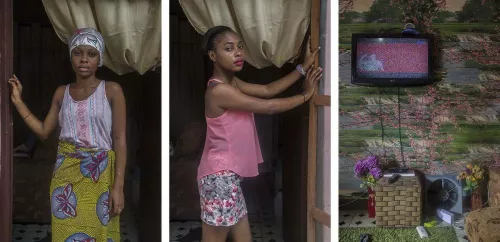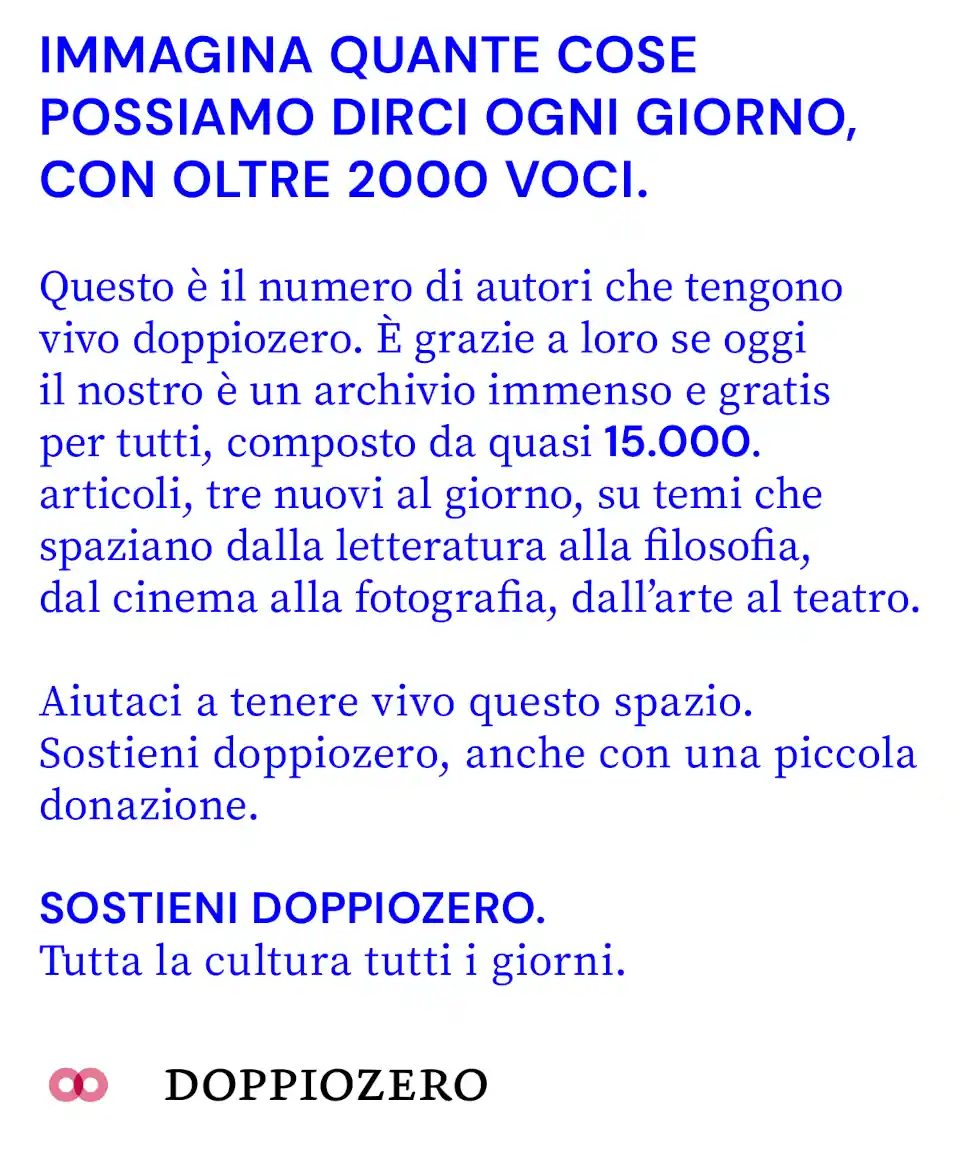Speciale
The conditions where we live are untold / Toma Muteba Luntumbue and the 5th Lubumbashi Biennale
The 5th edition of the Biennale de Lubumbashi opens to the public on October 7th 2017 in Lubumbashi, Democratic Republic of Congo, one of the biggest cities of the country and the capital of Katanga, the region where the incredible wealth of the Belgian empire was built.
This edition marks ten years of the activities of Picha, the art space and a production platform built by a collective of artists and cultural producers based in Lubumbashi.
This fifth edition of the Biennale also marks the reestablishment of Picha itself, since the organisation now has a new space (for exhibitions, presentations and residences) located in a popular area on the margins on the center, together with a commercial gallery and a lab for production. Rencontres Picha, Biennale de Lubumbashi was born as vision of a collective of cultural producers with the aim of establishing a space which would serve both as a production platform for local artists, and an international hub, rethinking art from a local perspective.
After the curatorship of Simon Njami and Elvira Dyangani Ose, the artistic director of this edition of the Biennale is Toma Muteba Lutumbue, artist, art historian, educator and commissioner. This is his second directorship: after being a strong support for Picha, in a moment when the organisation was undergoing a deep transformation, he directed the Biennale on 2015. This second experience in Lubumbashi marks a moment of consolidation not only of Picha as an organisation, but also for the field-research and site-specific practice of Toma in Lubumbashi.
This 2017 edition, with the title Éblouissements, marks also a deeper establishment of this international art event within the city and its cultural actors. A goal which is both the legacy of the four years presence of Toma on the field and the commitment of Picha to be an active actor within the city and not only the organiser of an international event of the global art world.
I have met Toma during the opening days of the Biennale. The moment when artists from Congo RCD and from foreign countries arrive and install their works, see the results and gather. The moment when the structure is ready to welcome them and to work out their needs and at the same the time where you can see the difficulties which an event like this in an African city pushes to rethink the whole process of producing, exhibiting, mediating, communicating. It is not about hosting a periodical international art event. It is about translating a practice of creation, exchange and display into a space which has very specific needs, borders, possibilities, history, feelings and visions.
Let’s start with the concept of the Biennale and its title. Which I find a very liberated intellectual choice. Éblouissements, a word used by Joseph Tonda, a sociologist, of Congolese and Gabonese origins, which is not yet one of those trendy critical thinkers so much mentioned within the global art world. And yet Tonda speaks to us about our present, the globalisation and its imaginers, the “imperial colonialism” as the real engine of our times. And by bridging economy and power to contemporary imageries, he also speaks to the art and about the arts.
How do you translate éblouissements into a curatorial statement?
I tried to work using an “handcrafted” method, trying to avoid methodology which I may have already experimented and that I carry with me to apply anywhere. There is a part of “contextual” construction in this work. Local political situation, the context of the city of Lubumbashi, the fact that it is a decentred space in relation to the international art world. It leaves a lot of freedom in terms of orientation of the project. I can work as curators worked on the Seventies. No keywords. Nevertheless there were big Narrations, there was by then a deep creativity on a theoretical level.
I have the impression that Congo RDC nowadays is a space open to experiment new forms. The conditions where we live are untold. There are no thinkers who really deployed an approach which would allow us to develop a simple vision, because all discourses (economical or political) face limitations every time they try explain reality.
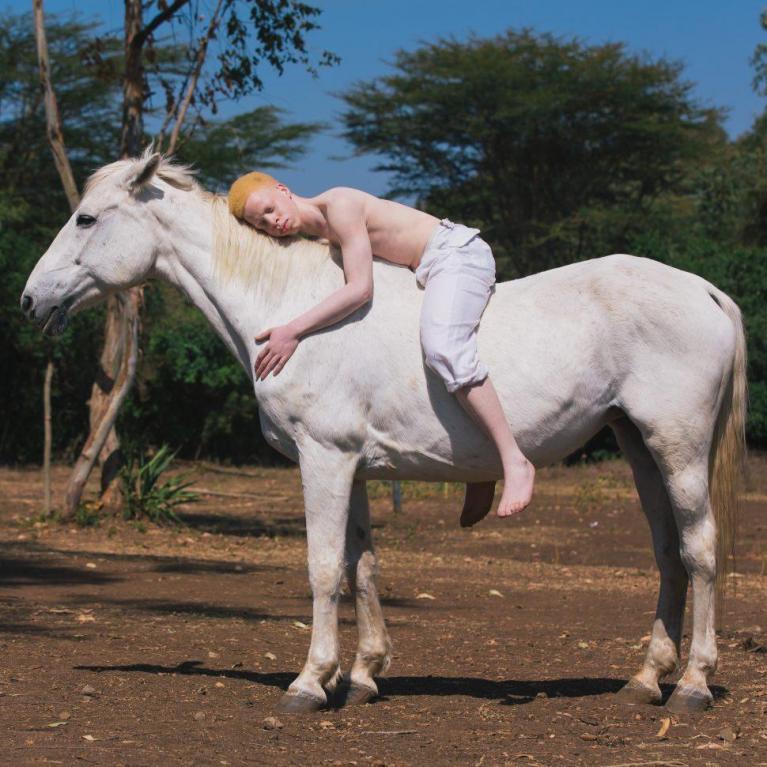
Vessel from the series still a stranger, Sarah Waiswa.
I appreciated the work of Joseph Tonda for its hybrid qualities and the fact that he’s not a “guru” of some specific milieux. His book is extremely actual in terms of today’s realities of Central Africa: his study is deeply anchored to his native country, Gabon, to the two Congos and the Central African Republic. He has a non manichean approach to the topics raised after the encounter between the West and Central Africa.
He refers to the omnipresence of the screen and the “screened image” as a vector for both communication and subjugation. He addresses the notions of real or fake; of authenticity; of the ephemeral which is replaced; the notion of the simulacra. The deployment of his thought is non-linear. It is a thought and not a movement, a thought which faces the disturbing reality people face. The metaphor of the Éblouissements relates to a kind of fascination but also a kind of blindness. He uses many metaphors to explain this notion, for instance when he describes the young girls who use make up and apply to their bodies all the attributes of western seduction - the prostitutes of Libreville. They use hair extensions, they dye their hair, they use lipstick. They’d like to attract the gaze of their European clients but in fact they push it away. This idea of attraction-repulsion also describes the prices through which the West and Africa met. A kind of reciprocal subjugation, fascination and a sort of blindness.
But Tonda doesn’t reject Western presence in Africa. But he sees the complexities of this encounter.
It is a very dense book, but the show is not about translating its main idea with visual arts. It would be insulting to use a simple concept just to resume a whole conceptual construction. Artists will rather work on the impact of the images, of political reality, and their own medium.
My invitation meant to be very open to their propositions and also to open an adventurous process. Their meeting with the city and the spaces of display will open their artworks towards a challenge and also towards questioning the publics and the city. It is not a Biennale made for the art world: it is rather a Biennale made for the people. This is not demagogy: there is really something different which can rise from the local conditions and from the translation of the exhibition dispositive which we are setting up in a context where there is no institutional or independent art system.

Lubumbashi Biennale.
How did you manage to connect the biennale to the city of Lubumbashi?
There're of course many venues for the proper shows. But there is also a need for finding a way for the citizens of Lubumbashi to be somehow presents in the works, in their development and into their mediation. How did you manage to work in the city?
There is something very specific about this Biennale: the achievement of a project that Sammy Baloji had conceived since 2013. It is Atelier Picha, a space where young artists are invited and trained. This year I took care of the pedagogic planning of the Ateliers and we underlined two axes: National Iconographies, where we investigated how the pervasive culture of images is perceived in the city of Lubumbashi and how it is conceived by the artists and the users of social media who live in the city. We wanted to reflect upon the production of images on this side of the world since the beginning of XX Century. A quest for consciousness about the use and abuse of images and how we can reappropriate a process of construction rather than consumption. From being abused and influenced on your way to live and think, to be a producer of images who belongs here, who is originally contextualised here. Therefore the artist is expected to reconstruct a creative process which is not about imitation of the mainstream of the arts or of the media, but rather an active observer of local complexities and singularities.
This axe of research started with the visit of the Musée Familial of Maitre Yabili (a museum which narrates the History of Congo RDC, from the foundation of Lubumbashi to the present, through the images and stories of a family: the family of Maitre Yabili himself, ed.). A wonderful discovery of Congolese history, which very few of the artists knew: we wanted them to root their own artistic project to Congolese history.
The second path of investigation was about the transformation of urban spaces in Lubumbashi, a one century-old city which went through heavy transformations on the moment of the crisis of the Gècamin in the 1990’s (the state-controlled corporation founded in 1966 and successor to the Union Minière du Haut Katanga, founded at the beginning of the XX Century by the Belgians, ed.). The Gècamin was the mother and father, the tutelary spirit and the iconic image of Lubumbashi. The moment it failed, there was a general collapse of life of this city rooted on mineral exploration.
We are working on retracing the colonial history and find its hints on the city, and also to rewrite it. Belgians are very proud of what they have done here. But we want to find what Congolese left on the urban structure of a city which quickly went from having one millions, to six millions inhabitants: how did they reappropriated the colonial city? How did they created a kind of porosity to go beyond the apartheid set up by the Belgians?
It was interesting for us to leave the participant artists on the field and let them translate the inputs they’ve collected into an artistic project. The mutations of this city are in fact until now very rarely approached by artists and they reinterpreted them after they’ve collected concepts, ideas, feelings, informations. Two women artists for instance worked on the female presence on the city and their relevant position in some political events.
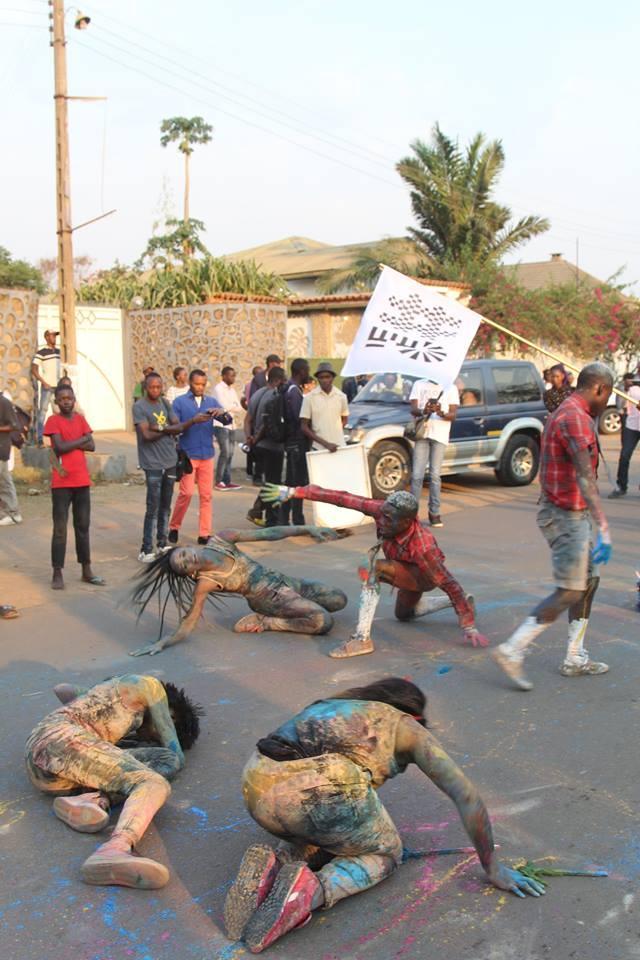
Lubumbashi Biennale.
Atelier Picha was a very important part of the Biennale. Its conception is of course part of the constructive discussions you’ve had with Picha during these last four years of cooperation with them as director of the Biennale. And also it comes out directly from a need of the cultural context of the city: to open spaces of interaction between art and artists (or practitioners) coming from abroad and the local people. Giving the chance to the foreign guests to leave something on the field. I would like to know more about the ethical and political vision of the Atelier: to leave something on the field to local creative people.
The Ateliers are designed as a long term educational platform for emerging congolese artists selected as participants. They had a mentoring phase, where they had the chance to discuss about their experiences and projects with national and international guests. We involved young Congolese artist which already have a presence within the local art world; therefore is not about educating them, but rather about supporting them to follow their path with coherence, vision and multidisciplinarity. The application we’ve received come from very different profiles: dancers, painters, film-makers, sound artists.
The idea was also to let them interact with each other: they are they are part of the same generation and they come from different parts of the country. They had to spend time together and exchange ideas and cooperate. So to also be conscious of their differences and to find convergences. We told them they had the power to change the reality of art in Congo RDC and to change the relationship between the local art world and the international. They had the keys to invent their own model.
Picha is a model for this reinvention of models: is an artist-led organisation developed with a Do It Yourself attitude. In 10 years they have created and independent structure and managed to work with very small facilities. Regardless, they have achieved a lot, and especially they have achieved to build their own models without importing them from somewhere else. Also, they’ve inserted themselves in their reality very deeply. Their headquarter is in a popular suburb, and they managed to establish partnerships with different entities of the city so to be a well rooted, not elites platform. The Biennale is one of the means to make this non elitist project happening: Picha wants the center to be a place where people can push the door and enter without being afraid of the distance you may feel in a museum.
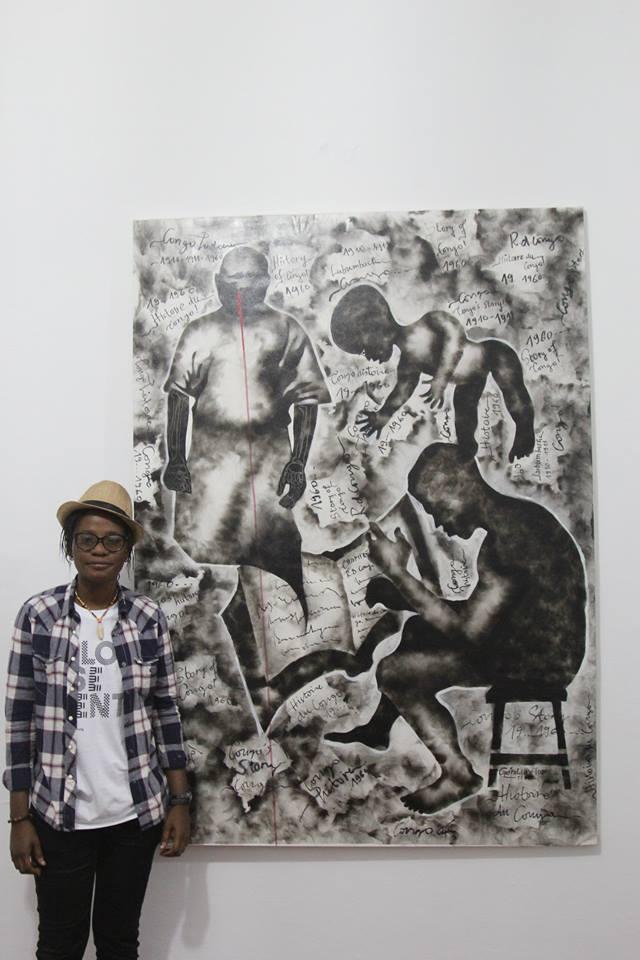
Geraldine Tobe.
You are an artist in the very beginning. And then an art historian and an educator, who teaches theory in two of the best academies of arts in Brussels. And you also have a curatorial trajectory in a moment where art from the African continent was still not the hype it is now.
How do you contextualise your presence in Lubumbashi? (You were the director twice of the Biennale, in 2015 and 2017).
I didn’t really plan to be here, I joined the invitation of the friends of Picha who maybe after many non-Congolese curators thought it was maybe interesting to experiment wth a curator who shared their own culture. Also if I never lived continuously here in Congo RDC, I am part of a generation who was grown on the second Republic (between 1967 and 1997, under the presidency of Mobutu, ed.). We got educated under the obsession of Africa, a kind of feeling which maybe made us unable to totally stick to Europe. We all had this feeling that we owned something to Africa, and that was my personal crisis. But we also had the feeling that we could have an impact. I wanted to share something, facilitate experimentation, add some meaning to the artistic research. So to be participating to a project such as this Biennale there is always some hope and attachment.
When I organise an exhibition I always do it as an artist who works with other colleagues. I belong to a generation who didn’t receive any education about curatorial practices: people like Harald Szeemann or Jan Hoet, René Block, they organised exhibitions. Jean Hubert Martin said he started to work in a museum because it was the only way to organise exhibitions.
The gaze of the contemporary art system over the global world is quite recent: now there are practices quite diffused, a culture of the “cut and paste”. I did never really work like that. I work, as I’ve mentioned, adopting a craftsman strategy, by inventing my own tools. I don’t have a model: I had the chance to work with Jan Hoet and I saw how he was very close to the artists and the artworks, without trying to impose a theory over them.
The backbone of my curatorial practices is the contact with the artist and with the context. The artworks and their quality comes first, before the cultural origin or the sexual orientation of the artist. I find suspicious this new emerging interest over African art and curators specialised exclusively in that field. I myself never exclusively work with African artists: even if my first exhibitions showed works of artists I really appreciated.
